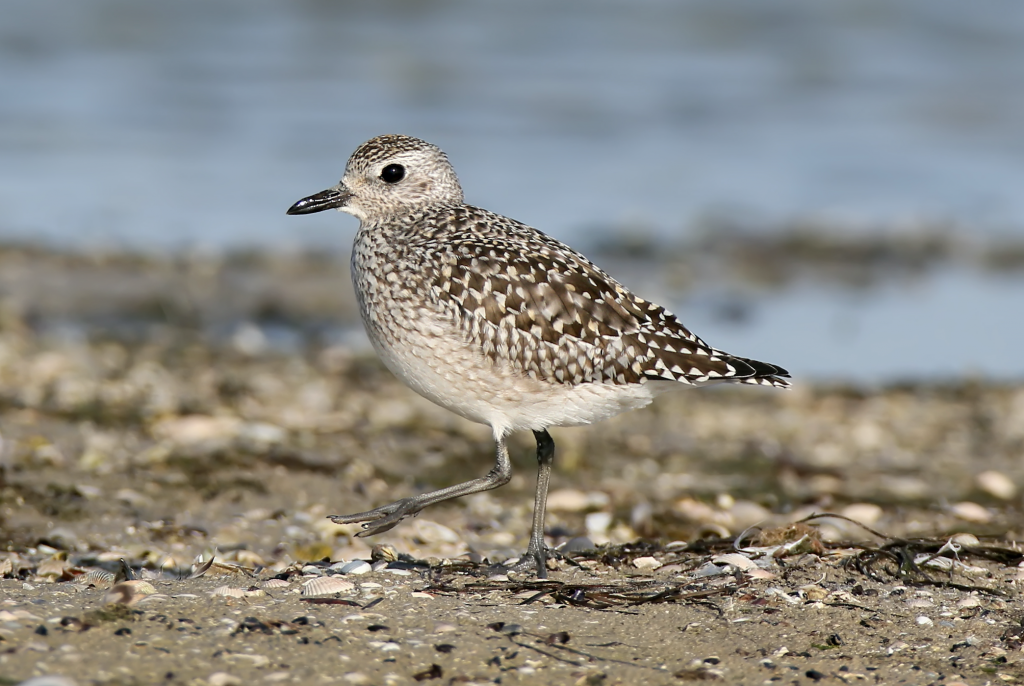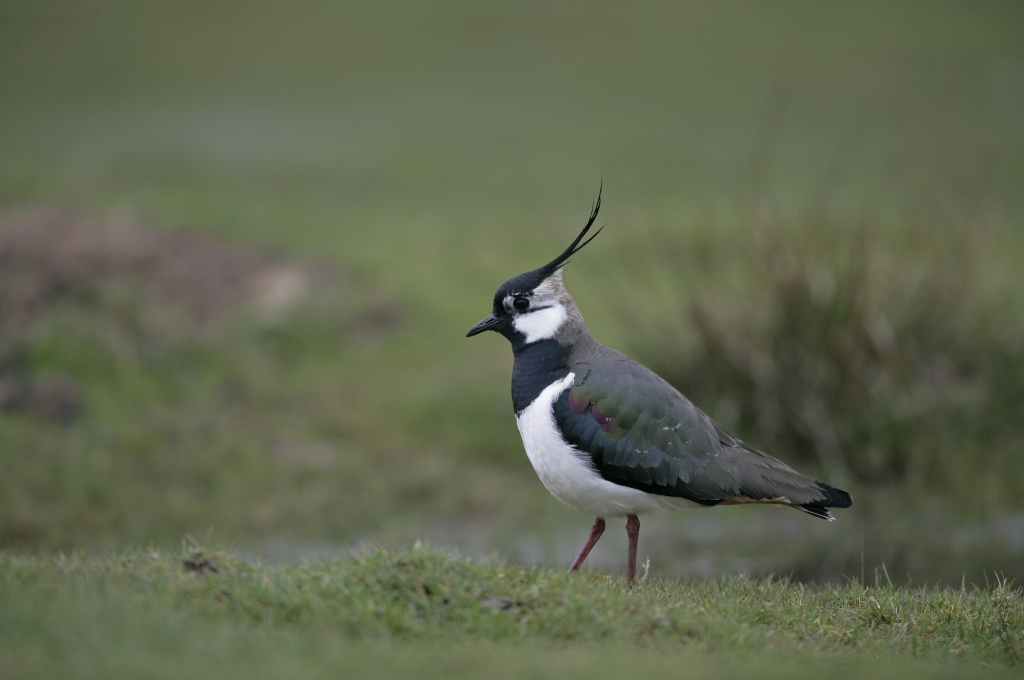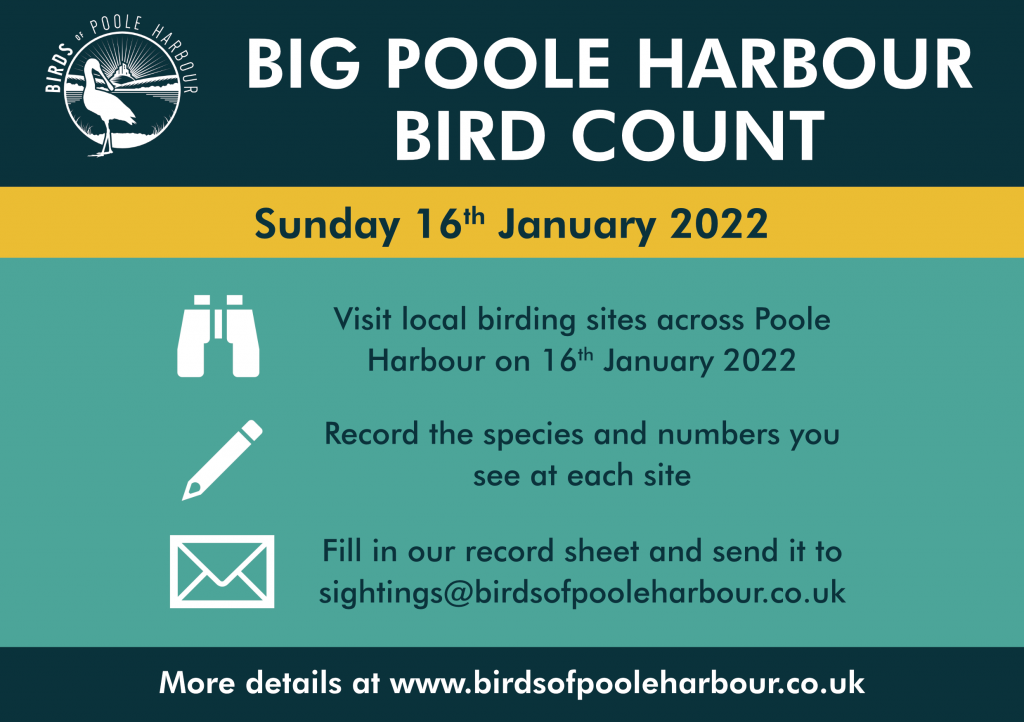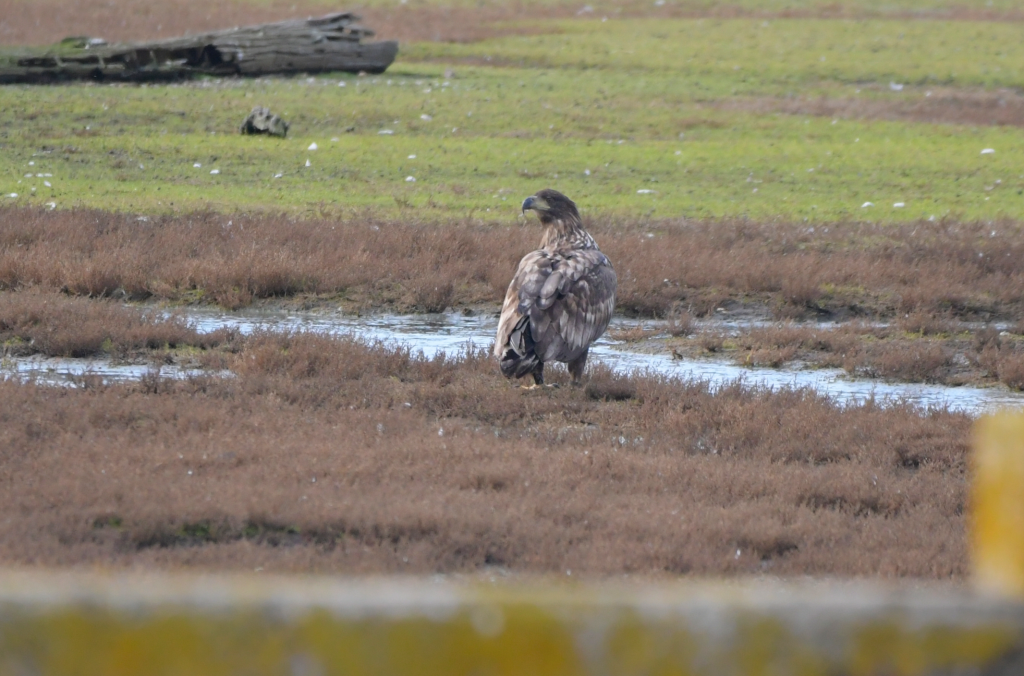An analysis of Poole Harbour bird populations has highlighted the area’s importance for both breeding and overwintering water birds. Two reports that were carried out by the Birds of Poole Harbour charity, one focusing on breeding waders and the other overwintering water birds, have just been published and highlight which species are doing well across the Poole Harbour area and which ones show cause for concern.
Poole Harbour is a designated Special Protection Area (SPA) due to the volume of certain species that visit each year. One report is an analysis of nearly 50 years of Poole Harbour Wetland Bird Survey data, These surveys are organised centrally by the British Trust of Ornithology but carried out by trained local volunteers each month throughout the winter and are aimed at assessing long and short-term trends in bird populations in specific areas of Poole Harbour. The results from these surveys are incredibly important as they form the decisions that are made as to what protection Poole Harbour is afforded.
 The analysis of the data has highlighted that several of our best-loved species are out-performing relative to populations across Great Britain. The charismatic Spoonbill, a bird that doesn’t breed in Dorset, has now become the second most important overwintering site in the country with on average c50 individuals residing at RSPB Arne between October and March each winter. The hardy dark-bellied Brent Goose, a visitor from Arctic Russia is now doing incredibly well in Poole Harbour having been almost completely absent in the area during the early 1970s with on average c1,700 frequenting the southern shores of the harbour as well as a small group of c200 that regularly feed on the open grassy area of Baiter Park. Wintering numbers of the elegant Avocet have boomed over the last 50 years with Poole Harbour now the 4th most important site in the UK. These stunning pied waders were once restricted to single figures visiting each winter, but as breeding populations recovered elsewhere in the UK and mainland Europe, numbers increased here with c1,500 now present each winter. Although a tiny number of Avocet stay for the summer each year and attempt to breed on the Brownsea Lagoon, none have successfully raised chicks over the last 10 years. Poole Harbour is internationally important for Black-tailed Godwit, a wader that visits from Iceland each winter. On a low tide during the winter between 3,500-6,500 feed predominately on the mudflats of Holes Bay, Lytchett Bay and the Wareham Channel with many choosing to roost at the top end of Middlebere during the high tide. In total, the report identifies twelve species where winter populations have increased more strongly in Poole Harbour over the past 20 years than in Great Britain as a whole.
The analysis of the data has highlighted that several of our best-loved species are out-performing relative to populations across Great Britain. The charismatic Spoonbill, a bird that doesn’t breed in Dorset, has now become the second most important overwintering site in the country with on average c50 individuals residing at RSPB Arne between October and March each winter. The hardy dark-bellied Brent Goose, a visitor from Arctic Russia is now doing incredibly well in Poole Harbour having been almost completely absent in the area during the early 1970s with on average c1,700 frequenting the southern shores of the harbour as well as a small group of c200 that regularly feed on the open grassy area of Baiter Park. Wintering numbers of the elegant Avocet have boomed over the last 50 years with Poole Harbour now the 4th most important site in the UK. These stunning pied waders were once restricted to single figures visiting each winter, but as breeding populations recovered elsewhere in the UK and mainland Europe, numbers increased here with c1,500 now present each winter. Although a tiny number of Avocet stay for the summer each year and attempt to breed on the Brownsea Lagoon, none have successfully raised chicks over the last 10 years. Poole Harbour is internationally important for Black-tailed Godwit, a wader that visits from Iceland each winter. On a low tide during the winter between 3,500-6,500 feed predominately on the mudflats of Holes Bay, Lytchett Bay and the Wareham Channel with many choosing to roost at the top end of Middlebere during the high tide. In total, the report identifies twelve species where winter populations have increased more strongly in Poole Harbour over the past 20 years than in Great Britain as a whole.
Despite the increases of some species, the analysis has also highlighted that there are several over-wintering birds that aren’t faring so well. Dunlin, a small sparrow-sized wader, no longer arrives here in the numbers they used to with numbers dropping from c7,000 to now only c2,000 per winter. Shelduck, which Poole Harbour is nationally important for, is also on a downward trend, with only c1,000 present between October and March compared to c4,000 in the late 1990s. One of the most dramatic declines is Pochard, a duck that used to over-winter in good numbers on Little Sea, Studland and saw peak counts of c1,300 25 years ago. However, the average peak count over the last five years was only three individuals per winter. In total, the report identifies thirteen species where winter populations have declined more severely in Poole Harbour over the past 20 years than in Great Britain as a whole
The second report published was a full ‘Breeding Waders of Poole Harbour’ study. This report specifically focused on nesting Redshank, Oystercatcher, Lapwing, Curlew, Ringed Plover, Little Ringed Plover and Avocet. An assessment of all suitable breeding habitat for each species was carried out and found that, by far, the most numerous breeding wader in Poole Harbour was Oystercatcher. In total the survey found 80 nesting pairs which not only makes it one of the most important sites in the region for breeding Oystercatcher, but is also considerably higher than previous estimated totals of c35 pairs. Brownsea Island was found to be the most important site with 31 pairs while other birds opted for the safety of urban rooftops including pairs on Parkstone Yacht Club, Purbeck Sports Centre and Poole Port. 
A 1979 RSPB survey highlighted that 85% of nesting Redshank in Dorset were using wet flooded meadows during the summer. That number is now barely 5% with most now dependent on the health of Poole Harbours saltmarsh. The survey logged 60 pairs of nesting Redshank, which is only slightly down from 69 pairs logged during a 2004 survey. Lapwing, also known as the ‘Peewit’, have had a mixed history in Poole Harbour as a breeding species. Nationally their populations have declined by 80% since the 1960s and that decline is reflected in the recent Poole Harbour survey with only 12 pairs found including 11 pairs on one site in the west of the harbour. One of the saddest stories is that of the Curlew. Although abundant in winter, with migrant birds settling here from further afield, their breeding status in Poole Harbour and Dorset is precarious to say the least. Nationally, breeding Curlew populations have declined by 50% over the past 20 years. Like the Lapwing, it’s thought that the intensification of farming practices has significantly contributed to these steep declines. During the recent Poole Harbour survey just a single pair of Curlew were found; however, their breeding attempt sadly failed due to possible fox predation.
It’s hoped that these publications will raise awareness about Poole Harbours significance as an important functioning eco-system for a whole range of bird species during the course of the year, as well as acting as an up to date reference point for local stakeholders and decision makers when assessing impacts of current and future Poole Harbour plans. It’s also important to begin understanding why some species are faring better than others, but with the data now publicly available those stories can now begin to unfold.
The full reports can be read in their entirety by following the below links
Breeding Waders of Poole Harbour – Spring and Summer 2021
Overwintering Birds of Poole Harbour – An Analysis of Poole Harbour WeBS Data 1975 – 2021
Photo Credits
Grey Plover – Birds of Poole Harbour
Lapwing – Birds of Poole Harbour
Contact – Birds of Poole Harbour
Tel – 01202 641003
Email – info@birdsofpooleharbour.co.uk




